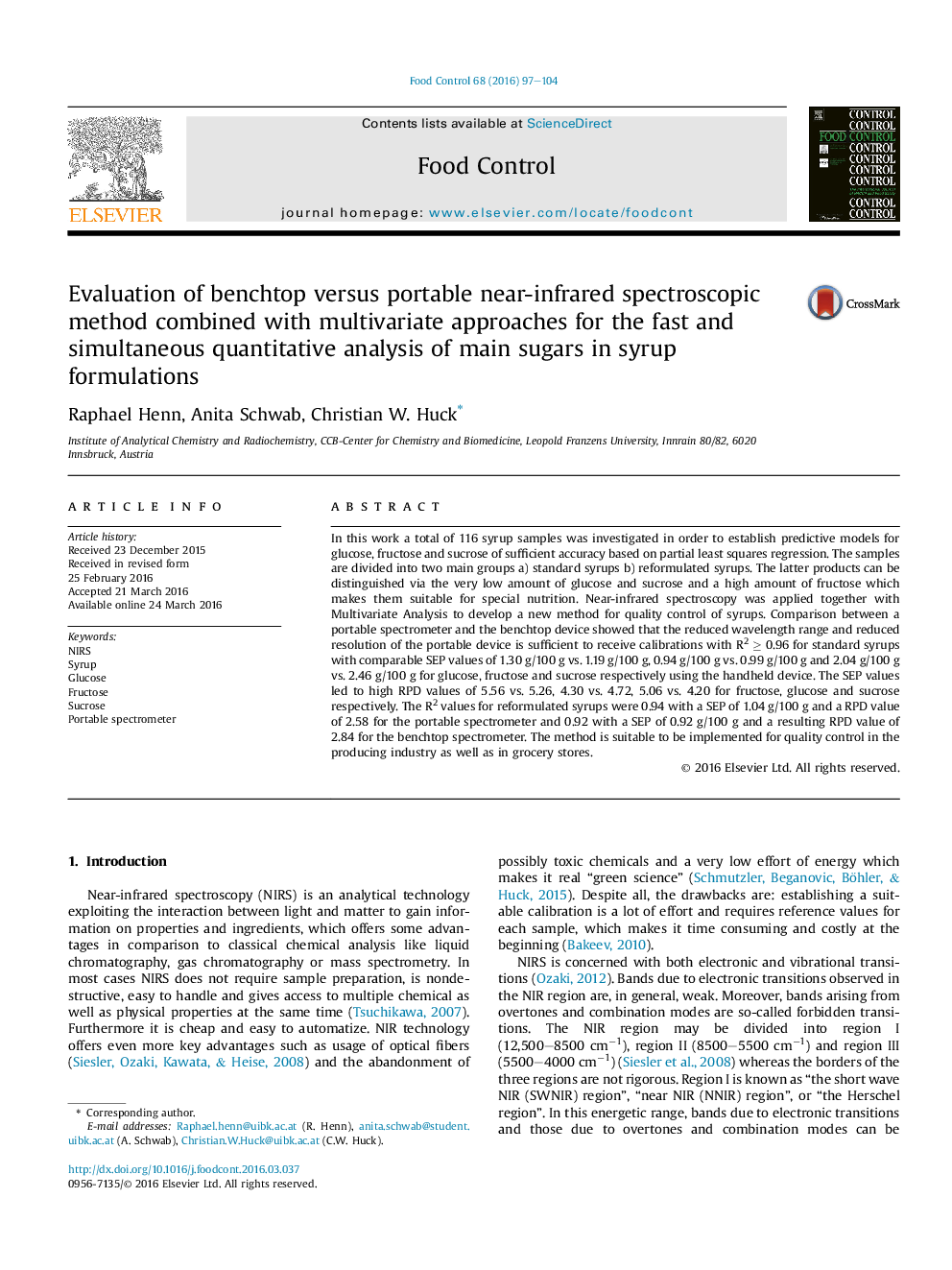| Article ID | Journal | Published Year | Pages | File Type |
|---|---|---|---|---|
| 4559028 | Food Control | 2016 | 8 Pages |
•Different carbohydrates in syrup were measured with NIRS.•Benchtop vs. portable spectrometers were compared.•Application of PLSR led to high quality calibration models for the individual sugars.•NIRS is suitable for fast, non-invasive quality control of syrups.•A portable spectrometer is ready for use and enables nonprofessionals to take measurements.
In this work a total of 116 syrup samples was investigated in order to establish predictive models for glucose, fructose and sucrose of sufficient accuracy based on partial least squares regression. The samples are divided into two main groups a) standard syrups b) reformulated syrups. The latter products can be distinguished via the very low amount of glucose and sucrose and a high amount of fructose which makes them suitable for special nutrition. Near-infrared spectroscopy was applied together with Multivariate Analysis to develop a new method for quality control of syrups. Comparison between a portable spectrometer and the benchtop device showed that the reduced wavelength range and reduced resolution of the portable device is sufficient to receive calibrations with R2 ≥ 0.96 for standard syrups with comparable SEP values of 1.30 g/100 g vs. 1.19 g/100 g, 0.94 g/100 g vs. 0.99 g/100 g and 2.04 g/100 g vs. 2.46 g/100 g for glucose, fructose and sucrose respectively using the handheld device. The SEP values led to high RPD values of 5.56 vs. 5.26, 4.30 vs. 4.72, 5.06 vs. 4.20 for fructose, glucose and sucrose respectively. The R2 values for reformulated syrups were 0.94 with a SEP of 1.04 g/100 g and a RPD value of 2.58 for the portable spectrometer and 0.92 with a SEP of 0.92 g/100 g and a resulting RPD value of 2.84 for the benchtop spectrometer. The method is suitable to be implemented for quality control in the producing industry as well as in grocery stores.
